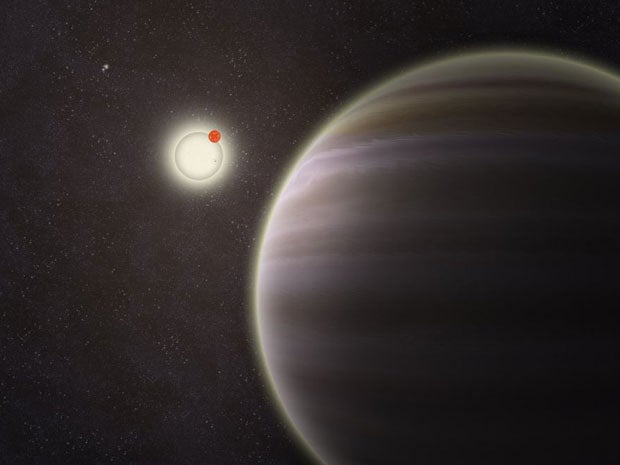'Armchair astronomers' discover planet with four suns

A planet with four suns has been identified by two “armchair astronomers”.
The bright new world, just under 5,000 light years away, is believed to be six times the size of Earth.
It orbits one pair of stars and is in turn circled by a second pair. As a result, a total of four stars light up its skies.
A handful of planets are already known to orbit pairs of binary stars, but the new find is said to be unique.
"It's fascinating to try and imagine what it would be like to visit a planet with four suns in its sky, but this new world is confusing astronomers - it's not at all clear how it formed in such a busy environment," said Dr Chris Lintott, from Oxford University.
The planet was discovered by two US volunteers using the planethunters.org website operated by scientists including Dr Lintott.
The website allows visitors to identify dips in the output of stars caused by their light being blocked by "transits" of orbiting stars.
Kian Jek, from San Francisco, and Robert Gagliano, from Cottonwood, Arizona, spotted the effect as the new planet passed in front of its suns.
A team of professional astronomers confirmed the find using the Keck telescopes on Mauna Kea, Hawaii.
The planet has been named PH1 after the planethunters website.
Dr Arfon Smith, from Adler Planetarium in Chicago, another member of the planethunters team, said: "It's an amazing discovery, but what's even more exciting is that, with more data currently being added to planethunters.org for anyone to explore, we really don't know what our armchair astronomers will discover next."
Details of the discovery were presented today at the Division for Planetary Sciences meeting in Reno, Nevada, US.
PA
Join our commenting forum
Join thought-provoking conversations, follow other Independent readers and see their replies
Comments
Bookmark popover
Removed from bookmarks